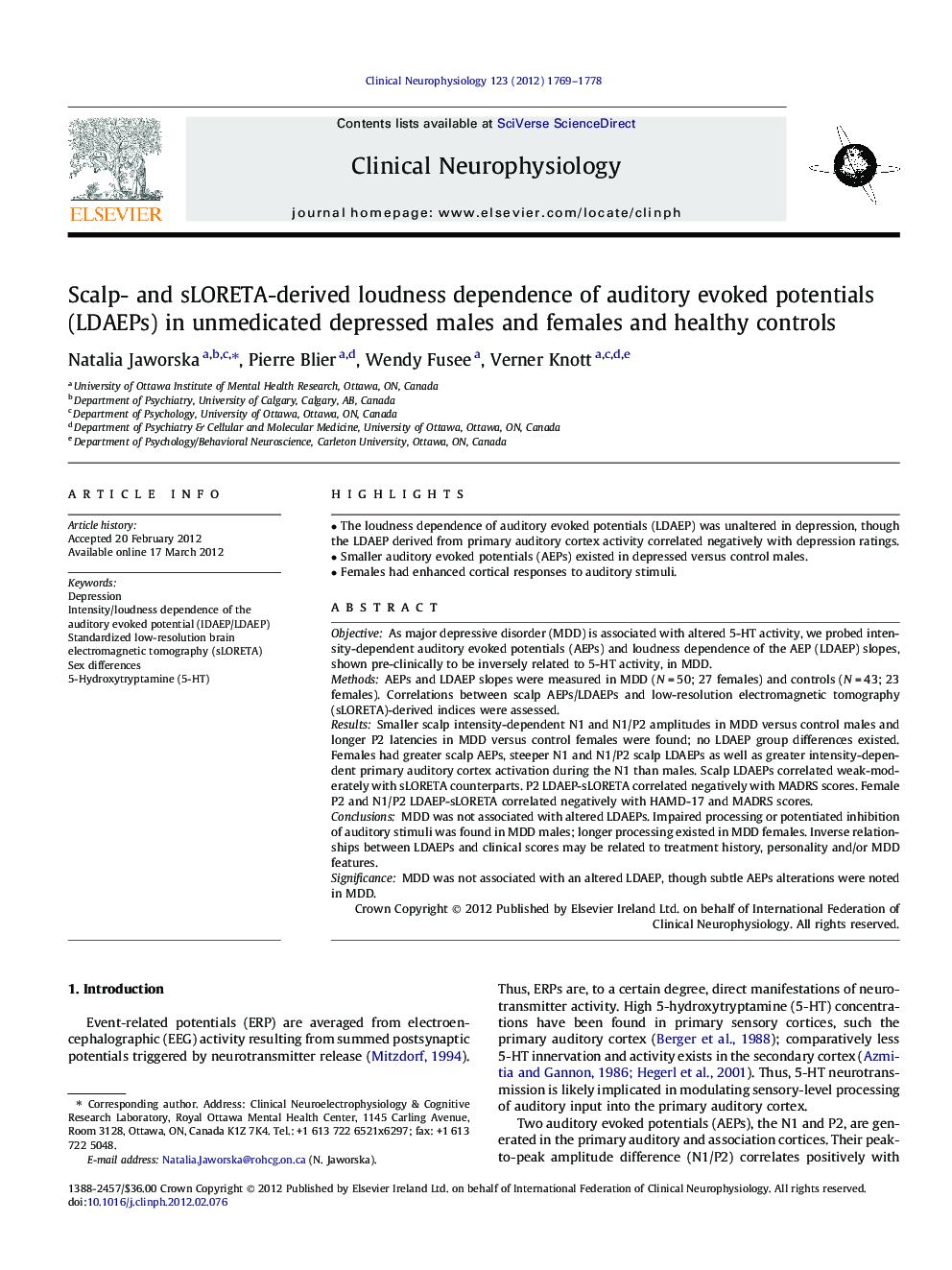| Article ID | Journal | Published Year | Pages | File Type |
|---|---|---|---|---|
| 6008773 | Clinical Neurophysiology | 2012 | 10 Pages |
ObjectiveAs major depressive disorder (MDD) is associated with altered 5-HT activity, we probed intensity-dependent auditory evoked potentials (AEPs) and loudness dependence of the AEP (LDAEP) slopes, shown pre-clinically to be inversely related to 5-HT activity, in MDD.MethodsAEPs and LDAEP slopes were measured in MDD (NÂ =Â 50; 27 females) and controls (NÂ =Â 43; 23 females). Correlations between scalp AEPs/LDAEPs and low-resolution electromagnetic tomography (sLORETA)-derived indices were assessed.ResultsSmaller scalp intensity-dependent N1 and N1/P2 amplitudes in MDD versus control males and longer P2 latencies in MDD versus control females were found; no LDAEP group differences existed. Females had greater scalp AEPs, steeper N1 and N1/P2 scalp LDAEPs as well as greater intensity-dependent primary auditory cortex activation during the N1 than males. Scalp LDAEPs correlated weak-moderately with sLORETA counterparts. P2 LDAEP-sLORETA correlated negatively with MADRS scores. Female P2 and N1/P2 LDAEP-sLORETA correlated negatively with HAMD-17 and MADRS scores.ConclusionsMDD was not associated with altered LDAEPs. Impaired processing or potentiated inhibition of auditory stimuli was found in MDD males; longer processing existed in MDD females. Inverse relationships between LDAEPs and clinical scores may be related to treatment history, personality and/or MDD features.SignificanceMDD was not associated with an altered LDAEP, though subtle AEPs alterations were noted in MDD.
⺠The loudness dependence of auditory evoked potentials (LDAEP) was unaltered in depression, though the LDAEP derived from primary auditory cortex activity correlated negatively with depression ratings. ⺠Smaller auditory evoked potentials (AEPs) existed in depressed versus control males. ⺠Females had enhanced cortical responses to auditory stimuli.
